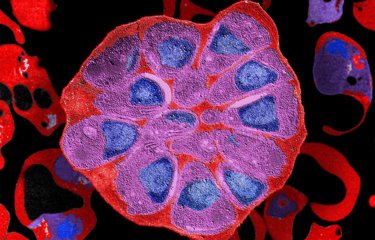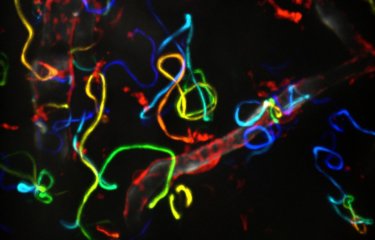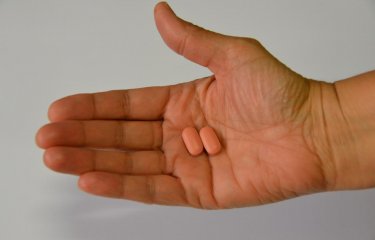Malaria super-spreading mosquitoes can now be identified more easily. Researchers from the Institut Pasteur, CNRS and IRD, in collaboration with scientific teams from four African countries and the United States, have identified a genetic marker that helps detect malaria-susceptible mosquitoes which are more likely to be infected with Plasmodium parasites in the wild, thereby having greater chance to transmit the disease to humans. Called the 2La inversion, this marker is a frequent and geographically widespread genetic difference found in Anopheles gambiae mosquitoes, the major African malaria vector. Insects which carry this marker tend to spend more time outside, while most forms of malaria control target insects which are present indoors. These results, published in the scientific journal eLife on June 23rd, could lead to the development of new targeted strategies aimed at controlling vectors.
Malaria is a life-threatening infectious disease caused by unicellular parasites belonging to the genus Plasmodium. The parasite is transmitted to humans by bites from infected Anopheles mosquitoes. According to the latest WHO estimates (December 2016), there were 212 million cases of malaria in 2015 and 429 000 deaths. Nearly half of the world's population is at risk of malaria, and the majority of these cases occur in sub-Saharan Africa.
Previous work with laboratory mosquitoes has shown wide variation between individual mosquitoes for their ability to transmit the malaria parasite. However, the reasons for these individual differences are not well understood, and they had not been previously detected in wild mosquitoes.
In this context, researchers from the Institut Pasteur, CNRS and IRD, in collaboration with African and American scientists, have reported the existence of super-spreading mosquitoes (or “super-spreaders”) in nature, which are particularly competent in transmitting the malaria parasite. Hence, thanks to this study, which was carried out in various villages of Guinea Conakry, Kenya and Burkina Faso, and which was led by Kenneth Vernick, head of the unit of Genetics and Genomics of Insect Vectors at Institut Pasteur, the scientists identified a genetic marker which is linked to a frequent and geographically widespread genetic difference that has large effect on malaria infection in mosquitoes – and, consequently, on an insect’s likelihood to transmit the disease. Named 2La, this marker is the first widespread genetic variation for malaria infection reported in the wild vector population.
The 2La genetic marker is a chromosome inversion. In Anopheles mosquitoes, this genetic variation is present in two forms: the 2La genetic sequence and the 2L+a genetic inversion. The study found that mosquitoes carrying the 2L+a genetic marker inversion (aka the susceptible marker) are twice as likely to be infected with malaria than mosquitoes carrying the other form (i.e. 2La).
The researchers also found a difference in mosquito behavior associated with the genetic marker: super-spreading mosquitoes, carrying the susceptible marker, spend more time outdoors compared to the other mosquitoes which tend to stay indoors.
These results indicate that, where abundant, especially in Central and East Africa, these mosquitoes may be responsible for a majority of malaria cases during the transmission season.
Considering that most efforts currently made in the fight against malaria vectors target both infected and non-infected mosquitoes equally as there is no easy way to distinguish between the two, and that they rely mainly on indoor directed control strategies like bed nets and insecticide spraying, these findings could open the door to the development of new vector controls targeting outdoor mosquitoes which, as this study showed, are also potent vectors of malaria.
The next steps include village-based studies of malaria mosquitoes in humid geographic zones of Africa, where the highest levels of human malaria occur, in order to confirm these results..
Source
The Anopheles gambiae 2La chromosome inversion is associated with susceptibility to Plasmodium falciparum in Africa, eLife, June 23, 2017
Michelle M Riehle (1), Tullu Bukhari (2), Awa Gneme (3), Wamdaogo M Guelbeogo (3), Boubacar Coulibaly (4), Abdrahamane Fofana (4), Adrien Pain (5,6,7), Emmanuel Bischoff (5,6), Francois Renaud (8,9), Abdoul H Beavogui (10), Sekou F Traore (4), N’Fale Sagnon (3), Kenneth D Vernick (5,6)
(1) Department of Microbiology and Immunology, University of Minnesota, Minneapolis, United States ;
(2) Department of Zoology, Maseno University, Maseno, Kenya ;
(3) Centre National de Recherche et de Formation sur le Paludisme, Ouagadougou, Burkina Faso ;
(4) Malaria Research and Training Centre, Faculty of Medicine and Dentistry, University of Mali, Bamako, Mali ;
(5) Department of Parasites and Insect Vectors, Unit of Genetics and Genomics of Insect Vectors, Institut Pasteur, Paris, France ;
(6) CNRS Unit of Hosts, Vectors and Pathogens, Paris, France;
(7) Bioinformatics and Biostatistics Hub (C3BI), USR 3756 IP CNRS, Institut Pasteur, Paris, France ;
(8) Laboratoire Maladies Infectieuses et Vecteurs: Ecologie Génétique, Evolution et Contrôle (MIVEGEC), Institut de Recherche pour le Développement (IRD), Montpellier, France ;
(9) UMR 224-5290, Centre National de la RechercheScientifique (CNRS), Montpellier, France ;
(10) Centre de Formation et de Recherche en Santé Rurale de Mafèrinyah, Conakry, Guinea.





